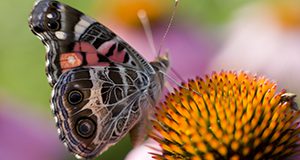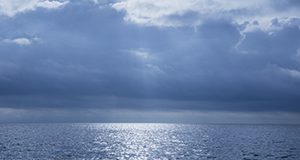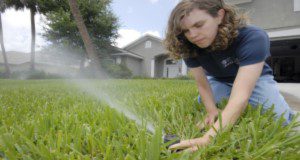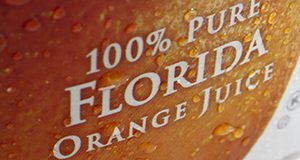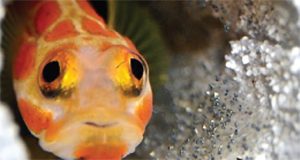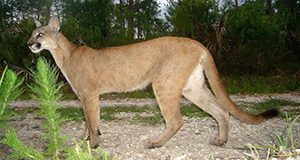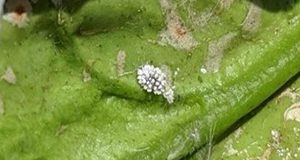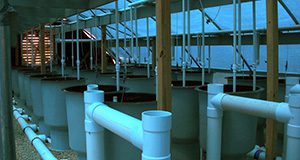American horseshoe crabs (Limulus polyphemus) look prehistoric and in fact really have not changed very much in the 200 million years they have been around. This 3-page fact sheet written by Savanna Barry, Holly Abeels, and Shelly Krueger and published by the UF/IFAS Program in Fisheries and Aquatic Sciences, School of Forest Resources and Conservation tells the story of these interesting and valuable “living fossils,” including their importance both to ecology and human medicine. It provides tips on how to find horseshoe crabs and a few ways you can help them.
https://edis.ifas.ufl.edu/sg190
Author: Susan Gildersleeve
Peters’s Rock Agama in Florida

Florida has experienced more introductions of nonnative reptiles than any other region on Earth. Approximately three times as many species of established, nonnative lizards live in the state as do native species. This 5-page fact sheet written by Kenneth T. Gioeli and Steve A. Johnson and published by the UF/IFAS Department of Wildlife Ecology and Conservation provides background information about the visually striking Peters's rock agama, including information about its introduction to Florida, as well as its biology, conservation issues, and management recommendations.
https://edis.ifas.ufl.edu/uw476
Concepts, History, Principles, and Application of Germplasm Cryopreservation Technology
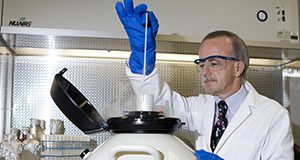
Germplasm refers to the living genetic resource of such biological materials as seeds, pollen, animal sperm, eggs, embryos, and larvae. Cryopreservation maintains these materials at extremely low temperatures. The technology is used in medicine as well as to maintain biological diversity, preserve genetic resources, support breeding programs, and conserve endangered species. This 10-page fact sheet written by Huiping Yang and Terrence R. Tiersch and published by the UF/IFAS School of Forest Resources and Conservation Program in Fisheries and Aquatic Sciences introduces the basic concepts, history, principles, and applications of germplasm cryopreservation technology.
https://edis.ifas.ufl.edu/fa223
Are consumers knowledgeable about neonicotinoid insecticides and pollinator-friendly plants?
What does the general public know about neonicotinoids used in ornamental horticulture and their effects on pollinators? The question is an important one given that home landscapes serve as pollinator habitat and can impact pollinator health. This 5-page fact sheet written by Hayk Khachatryan, Xuan Wei, and Alicia Rihn and published by the UF/IFAS Food and Resource Economics Department summarizes a survey addressing consumer knowledge about neonicotinoids and pollinator plants, as well as their interest in enhancing pollinator health. The survey is part of a larger research project aimed at incorporating pollinator conservation into the ornamental horticulture industry's sustainability initiatives.
https://edis.ifas.ufl.edu/fe1081
Ocean Acidification: pH Variability across Space and Time
The absorption of atmospheric carbon dioxide by the oceans has changed the chemical properties of seawater and made it more acidic all over the world. Florida, with an extensive coastline and deep cultural and economic ties to marine resources, will be directly affected. This 4-page fact sheet written by Lisa Krimsky, Joseph Henry, and Joshua Patterson and published by the UF/IFAS Program in Fisheries and Aquatic Sciences, School of Forest Resources and Conservation focuses on the spatial and temporal variability in oceanic pH and provide an overview of pH variability in Florida's coastal waters.
https://edis.ifas.ufl.edu/fa227
Consumer and Producer Perceptions and Preferences for Pollinator Friendly Labeling Practices in the US Green Industry
Increasing consumer interest in sustainable products and in protecting bees and other pollinator insects may be reducing demand for plants grown using neonicotinoids. This 5-page fact sheet written by Hayk Khachatryan, Xuan Wei, and Alicia Rihn and published by the UF/IFAS Food and Resource Economics Department summarizes consumer and producer perceptions about neonicotinoid-related regulations and labeling practices and identifies discrepancies between consumer and producer preferences for different pollinator friendly labeling phrases.
https://edis.ifas.ufl.edu/fe1083
Homeowners’ Preferences for Smart Irrigation Systems and Features
Drought conditions make landscape irrigation and reducing water use top-of-mind for many Floridians. Encouraging wise water use is of particular importance to the smart irrigation industry and water policy makers. This 5-page fact sheet written by Hayk Khachatryan, Alicia Rihn, Dong Hee Suh, and Michael Dukes and published by the UF/IFAS Food and Resource Economics Department pinpoints key attributes and barriers affecting consumers' irrigation purchases and their adoption of smart irrigation technologies.
https://edis.ifas.ufl.edu/fe1080
Trips: Ciclo de vida
Trips, morfología general, biología general, rango de hospederos de la plaga, enemigos naturales, y síntomas y daños.
This is the Spanish translation of ENY-879/IN1058, Pest Identification Guide: An Introduction to Thrips. It was written by Nicole Casuso and Hugh Smith, translated by Lorena Lopez, and published by the UF/IFAS Entomology and Nematology Department.
https://edis.ifas.ufl.edu/in1288
La araña roja – Ciclo de vida
La araña roja, Tetranychus urticae Koch, morfología general, biología general, espectro de hospederos de la plaga, enemigos naturales, y síntomas y daños.
This is the Spanish translation of ENY-880/IN1059, Pest Identification Guide: Two-spotted Spider Mite, Tetranychus urticae Koch. It was written by Nicole Casuso and Hugh Smith, translated by Lorena Lopez, and published by the UF/IFAS Entomology and Nematology Department.
https://edis.ifas.ufl.edu/in1287
Orange Juice Consumers Response to the Covid-19 Outbreak
This 4-page fact sheet written by Yan Heng, Marisa Zansler, and Lisa House and published by the UF/IFAS Food and Resource Economics Department presents consumers’ responses to a monthly survey and provides a look at those consumers who have contributed to a surge in orange juice sales since April. It is intended to help the industry understand the possible impacts of the COVID-19 pandemic and develop marketing plans to sustain orange juice purchases beyond the short run.
https://edis.ifas.ufl.edu/fe1082
Aquaculture applications of the Family Blenniidae
Marine ornamental fish production is still in its infancy compared with its freshwater counterpart. About 1,800 wild-caught fish species are imported into the United States each year, clear proof of the need for the expansion of marine ornamental production to include new species and families of fish. Distinct behavior and a wide range of colors makes fish from the Blenniidae family, called blennies, a popular choice in the aquarium hobby. These hardy fish are small and rarely aggressive to other reef species and they eat algae and clean tank substrate. This 6-page fact sheet written by Jesse Von Linden, Joshua T. Patterson, Cortney L. Ohs, and Matthew A. DiMaggio and published by the UF/IFAS Program in Fisheries and Aquatic Sciences, School of Forest Resources and Conservation provides a brief overview of the family including description and taxonomy, natural history, culture techniques, a bit about disease challenges, and advice on marketing for ornamental Blennids.
https://edis.ifas.ufl.edu/fa225
Aquaculture Applications of the Family Gobiidae
Marine ornamental fish production is still in its infancy compared with its freshwater counterpart. About 1,800 wild-caught fish species are imported into the United States each year, clear proof of the need for the expansion of marine ornamental production to include new species and families of fish. The family Gobiidae is the fourth most imported family of marine ornamental fish. Gobies can be easily housed with a variety of other species of fish. Several have qualities that lend themselves to aquarium life. Some clean other fish and others sift the sand bed. Many naturally perch on the rockscape or corals, spending their time beautifying their surroundings with their bright colors and intriguing behavior. This 7-page fact sheet written by Jesse Von Linden, Joshua T. Patterson, Cortney L. Ohs, and Matthew A. DiMaggio and published by the UF/IFAS Program in Fisheries and Aquatic Sciences, School of Forest Resources and Conservation provides a brief overview of the family including description and taxonomy, natural history, culture techniques, a bit about disease challenges, and advice on marketing for ornamental Gobids.
https://edis.ifas.ufl.edu/fa226
Wildlife of Florida Factsheet: Virginia Opossum
Learn more about the Florida opossum!
The Wildlife of Florida Factsheet series was created to provide the public with a quick, accurate introduction to Florida's wildlife, including both native and invasive species. Authors Simon Fitzwilliam and Raoul Boughton hope this 2-page quick guide and others in the series published by the UF/IFAS Department of Wildlife Ecology and Conservation will inspire readers to investigate wildlife in their own backyards and communities and understand the amazing biodiversity of wildlife in the state of Florida.
https://edis.ifas.ufl.edu/uw471
Hurricane Toads
Eastern spadefoots are a common but largely unappreciated species of native toad in Florida. Following torrential rains they emerge from hiding and breed in shallow pools. In as little as 14 days, hordes of raisin-sized froglets emerge and hop away in all directions from the pond or puddle where they were born. Some of them find their way to yards and garages of suburban neighborhood homes. Other unlucky baby toads end up on roads, where they are smashed. This 5-page fact sheet written by Steve A. Johnson and Candace D. Fuhrmann and published by the UF/IFAS Department of Wildlife Ecology and Conservation outlines the unique biology of this species and explains how to identify eastern spadefoot tadpoles, young, and adults. It also includes a section on how you and your friends and family can help these interesting and attractive little creatures by engaging in citizen science.
https://edis.ifas.ufl.edu/uw474
Wildlife of Florida Factsheet: Florida Panther
Learn more about the Florida Panther!
The Wildlife of Florida Factsheet series was created to provide the public with a quick, accurate introduction to Florida’s wildlife, including both native and invasive species. Authors Kelly Koriakin and Raoul Boughton hope this 2-page quick guide and others in the series published by the UF/IFAS Department of Wildlife Ecology and Conservation will inspire readers to investigate wildlife in their own backyards and communities and understand the amazing biodiversity of wildlife in the state of Florida.
https://edis.ifas.ufl.edu/uw467
Sample Profitability and Cost Estimates of Producing Sweet Flavored Carambola (Averrhoa carambola) in south Florida.
This 7-page fact sheet written by Fredy H. Ballen, Aditya Singh, Edward A. Evans, and Jonathan H. Crane and published by the UF/IFAS Food and Resource Economics Department reports the costs and returns of operating an established sweet-flavored carambola grove in south Florida. It is intended to provide a reference to help estimate the financial requirements of running an established grove. Information was collected through field interviews with growers and industry specialists about a wide range of production practices used on small farms of five acres or fewer.
https://edis.ifas.ufl.edu/fe1079
Citrus Pest Quick Guide: Lebbeck Mealybug Nipaecoccus viridis (Newstead)
A one-page quick guide written by Lauren M. Diepenbrock and Jamie D. Burrow and published by the Entomology and Nematology Department presents the life cycle of the lebbeck mealybug and provides several photos of the pest and the damage it causes to assist in identification.
https://edis.ifas.ufl.edu/in1280
Florida Fishing Guide Requirements Checklist
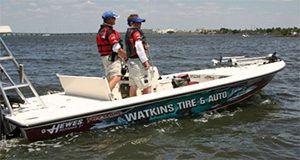
Guides and captains maintaining vessels used for recreational fishing are an important part of coastal economies, but regulations affecting them can be complicated and may differ depending on several factors, including targeted species, number of customers, vessel size, etc. These regulations are often described in multiple locations, since for-hire guides operate at the intersection of multiple state and federal jurisdictions. This 3-page fact sheet written by Elizabeth A. Staugler, Ralph Allen, and Edward V. Camp and published by the UF/IFAS School of Forest Resources and Conservation, Program in Fisheries and Aquatic Sciences summarizes the relevant regulations and requirements.
https://edis.ifas.ufl.edu/fa218
Overview of Commonly Cultured Marine Ornamental Fish
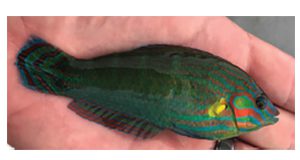
The production of freshwater ornamental fish dominates the ornamental aquaculture industry, yet the small marine ornamentals sector has grown substantially in recent years. This 7-page fact sheet written by Elizabeth M. Groover, Matthew A. DiMaggio, and Eric J. Cassiano and published by the UF/IFAS Program in Fisheries and Aquatic Sciences, School of Forest Resources and Conservation briefly reviews the more common groups of marine ornamental fishes cultured in the United States. As we learn more about marine ornamentals and as aquaculture protocols for marine ornamentals develop and improve, it is possible that more species may become economically feasible to produce and more cultured marine fish may begin to supplement wild-caught stocks in the marine aquarium trade.
https://edis.ifas.ufl.edu/fa224
Opportunities and Obstacles to Aquaculture in Florida
Aquaculture is growing in Florida as it is worldwide, but in Florida aquaculture has not yet reached its substantial potential. To understand why this might be, the University of Florida's Institute of Sustainable Food Systems organized and convened a meeting between small-agency, industry, and academic stakeholders to discuss the opportunities and obstacles to aquaculture in Florida. This 6-page fact sheet written by Edward Camp, Taryn Garlock, and James Anderson and published by the UF/IFAS School of Forest Resources and Conservation, Program in Fisheries and Aquatic Sciences, describes the proceedings of this meeting in the context of the broader scientific literature explaining why aquaculture ventures do and sometimes do not succeed.
https://edis.ifas.ufl.edu/fa221

